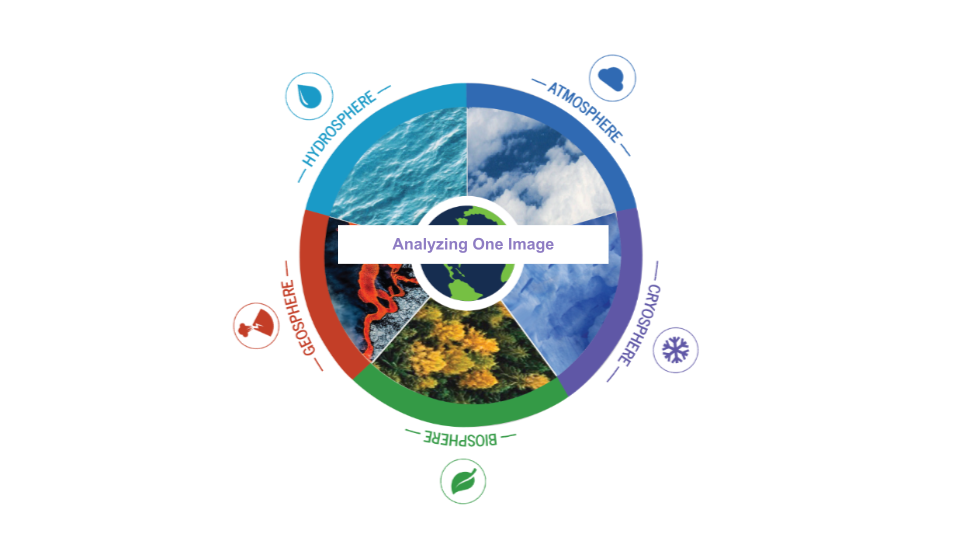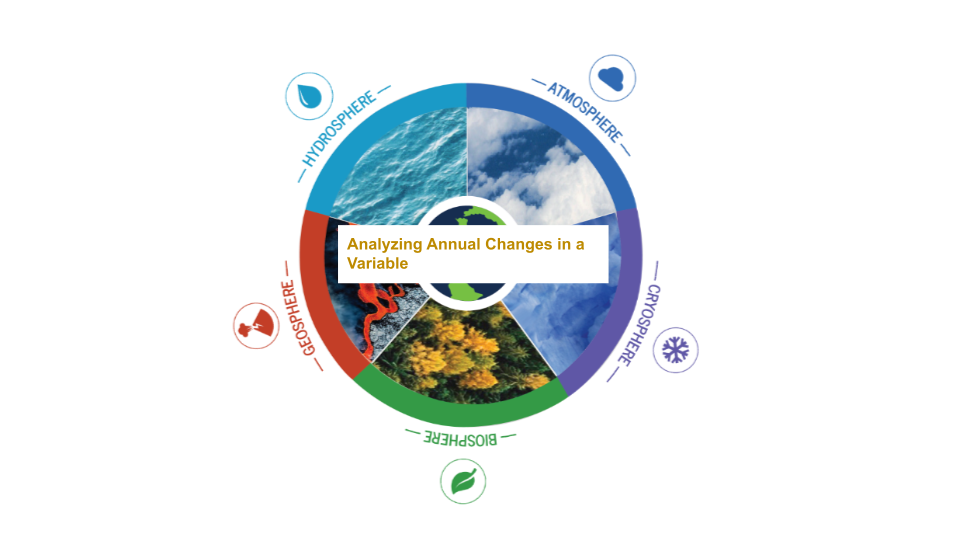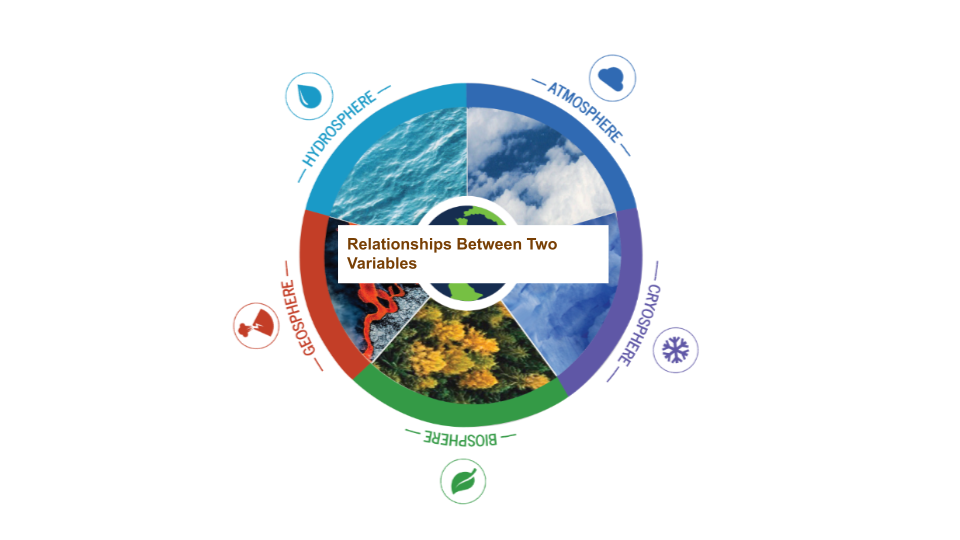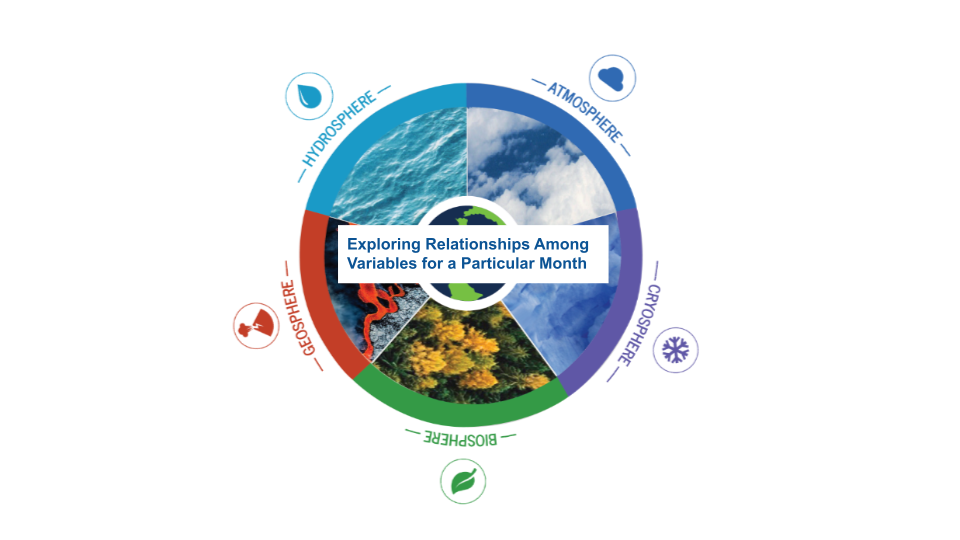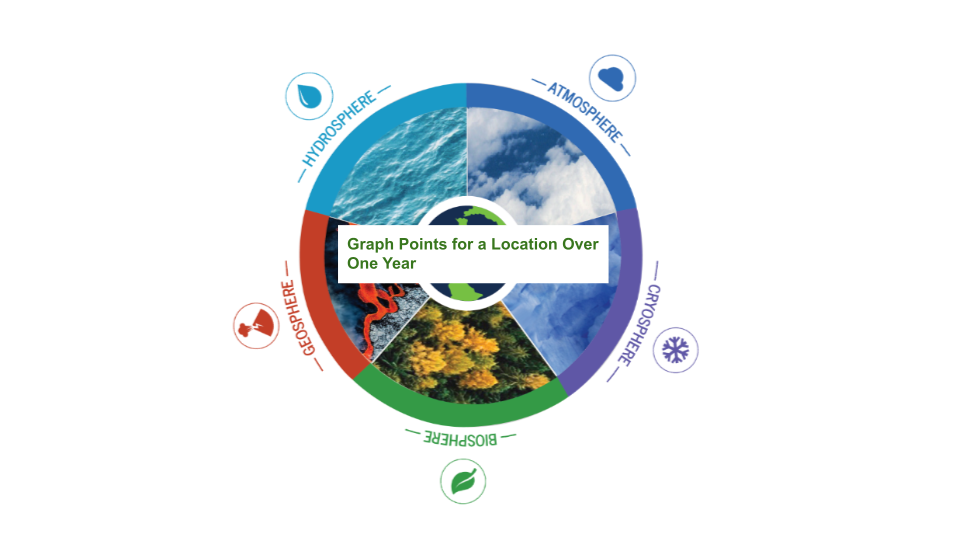Lesson Plans
Earth System Satellite Images- Analyzing All Variables
Overview
The Earth System Satellite Images available on My NASA Data provide teachers and students opportunities to explore data and identify relationships between/among different components of the Earth system. The Earth System Satellite Images, help the learner visualize how different Earth system variables change over time, establish cause and effect relationships for a specific variable, identify patterns, and determine relationships among variables.
In this lesson, students will explore six variables over the course of one year.
This lesson has been adapted and modified from the GLOBE Earth System Poster Learning Activities.
Materials Required
- Earth System Satellite Images (Global or North America).
- CER (Evidence, Reasoning, Claim)
- Pen, Pencil
Note: Consider laminating the resources in this list for future use.
Procedure
Teacher Preparation before the lesson:
- There are sets of six satellite image cards, one for every other month in a year, for each Earth system variable as listed below.
- Aerosols
- Cloud Cover
- Insolation (incoming solar radiation)
- Precipitation
- Surface Skin Temperature
- Vegetation
- Print all of the Earth System Satellite Images (Global or North America).
Part I: Jigsaw Activity
- Divide the students into small groups.
- Distribute all images for a different variable to each group.
- For example: group one: aerosols (January through November); group two: cloud cover (January through November); and so forth.
- Have students arrange the images in chronological order.
- Allow the groups time to analyze the maps.
- Use some or all of the guiding questions:
- What do the colors of the map tell you?
- What changes do you observe? What happened?
- How do the data connect to the locations on the map?
- What information can you identify on the map?
- How does this variable affect other parts of the Earth System?
Part II: Jigsaw Activity
- Regroup the students so that each group has all of the variables, but for the same month.
- For example, students in group one should have all variables for January; students in group two, all variables for March, and so on.
- Allow the groups to spend approximately 10 minutes analyzing their maps, and asking each other questions about their observations. You can use some of the questions from part I of the jigsaw activity.
- Ask the groups, one at a time, to share with the entire class the information about their images.
- Use some or all of the following guiding questions:
- What variable did you examine and what is the range of values shown on the scale bars?
- Where in the image do you find the highest and lowest values (the extremes) of the data in your images?
- Why do these locations experience the extremes and not other locations?
- Are any patterns in the data noticeable?
- Are patterns different on different continents? Different over water than over land? Explain these patterns.
Part III: Close Lesson
Complete the lesson using a Claim-Evidence-Reasoning (CER), but in reversed order as Evidence-Reasoning-Claim.
- Although they will complete a CER activity, you will reverse the order to Evidence, Reasoning, and Claim (ERC).
- Print out the ERC worksheet and rubric for each student.
- Have the students review the Earth System Satellite Images to use as reference.
- Have students reflect on the following question: What story do the data tell about the different variables from the satellite images?
- Start first with Evidence: What evidence is there to support that there are connections among different variables?
- Next, Reasoning: Why is this evidence important?
- Finally, Claim: Make a claim about how the different patterns on the maps show connections among different variables.
- Allow them to use the rubric as their guidance for grading purposes.
- Have them share their claim within their group, then choose one speaker from the group to share one of the responses with the class.
Supported NGSS Performance Expectations
- 3-ESS2-2: Obtain and combine information to describe climates in different regions of the world.
- MS-ESS2-6: Develop and use a model to describe how unequal heating and rotation of the Earth cause patterns of atmospheric and oceanic circulation that determine regional climates.
- HS-ESS2-2: Analyze geoscience data to make the claim that one change to Earth's surface can create feedbacks that cause changes to other Earth systems.
- HS-ESS2-4: Use a model to describe how variations in the flow of energy into and out of Earth’s systems result in changes in climate.
The learners will be able to:
- Discover, analyze, and interpret patterns in a graphic display of data
- Conduct an analysis of mapped data
- Develop descriptions and explanations using evidence
- Develop an understanding of the interactions within the Earth system
- Establish cause and effect relationships for a specific variable, identify patterns, and determine relationships between variables
- Why and to what extent should we be interested in Earth as a System?
- How can one part of the Earth’s system have an impact on the other systems?
The processes comprising the Earth’s environment are interconnected. Understanding how these connections operate on a global scale is to understand the Earth as a system. Understanding the Earth as a system requires a quantitative exploration of the connections among various parts of the system. These processes take place in and between the atmosphere, oceans, fresh water, ice, soil, and living components. These processes also include energy from the Sun, and the gases and particles that enter the atmosphere and oceans from both natural and anthropogenic, or human-caused, sources. The activities in this guide will help students understand variations in environmental parameters by examining connections among different phenomena measured on local, regional and global scales. As students look at the connections between environmental data, they will see that the environment is the result of the interplay among many processes that take place on varying time and spatial scales. They will also understand that environmental processes are not bound by oceans, mountains, or country delineations–they are truly global in scope.
Students need to be familiar with longitude and latitude, as well as familiarity with qualitative and quantitative observations.
| Studying how Earth’s systems interact is as important as studying the individual systems. NASA and its international partners operate several Earth-observing satellites, collectively called the A-Train, that closely follow one after another along the same orbital track. The near-simultaneous observations of a wide variety of factors help the scientific community advance our knowledge of Earth-system science and apply this knowledge for the benefit of society. Source: NASA 60 Years and Counting |
- Use the Earth System Satellite Images Graphic Organizer to explore and analyze the differences between the different variables.
- Create questions based on the variable(s) you wish the students to analyze. For example: Observe the locations on the map. What differences are observed within the same months, but different variables?
- Once the students have had time to complete their graphic organizers, moderate a discussion so that students can compare the differences and similarities among the variables.
- Standalone Lesson (no technology required)
- Internet Required

